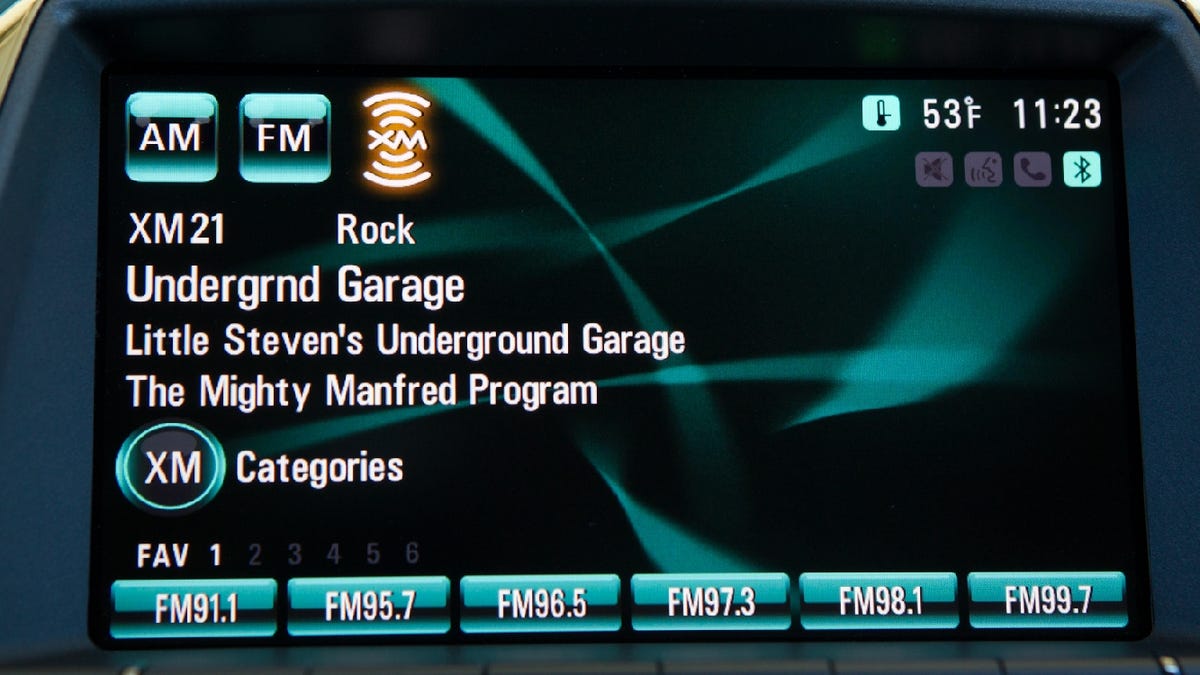Fed driver distraction guidelines make navigation unusable
The recently issued National Highway Transportation Safety Agency guidelines for automakers to minimize distraction for in-vehicle electronics included few surprises, except for the proposal to freeze maps on navigation systems.

Last month, the National Highway Transportation Safety Agency published a dense document with guidelines for automakers on how to minimize the distractions caused by in-vehicle electronics. Buried among equations for determining optimal display viewing angles and testing procedures is the recommendation that navigation devices should only show static or near-static images, which would essentially eliminate their usefulness.
Section V.5.b of the document titled Visual-Manual NHTSA Driver Distraction Guidelines for In-Vehicle Electronic Devices says that "Dynamic, continuously moving maps are not recommended."
The section, which deals with photographs or videos, says that static or near-static maps for the purpose of driving directions are acceptable. Near static is defined as being updated every few seconds.
Every current installed navigation system uses the car as a fixed point, and shows the map moving around it. NHTSA wants that changed so as to keep the map fixed. Even showing the position of the car moving on the map could be considered a dynamic image. The recommendation seems to suggest that the position of the car could only be updated every couple of seconds. Likewise, the map could be refreshed once the car has left the currently displayed area.
This recommendation would essentially make navigation unusable. The system could still give an auditory warning for the next turn, but without being able to glance down at the map and see how close the next street is would likely lead to a lot of missed turns and resultant frustration.
And although NHTSA includes the results of driver distraction studies in the guidelines, it has no testing directly related to using a navigation system. Instead there are more general conclusions against any tasks that require looking at a device for periods of more than 2 seconds, or a series of glances that amount to more than 12 seconds at at time.
I would think that looking at a static map, and trying to find the particular street which you are on, would by much more time-consuming than seeing your exact position on a dynamic map.
30 characters or less
The NHTSA guidelines also conclude that drivers can not comprehend more than 30 characters of text with a quick glance. Here is an example of 30 characters of text: "The new NHTSA guidelines make navig".
Along with recommending that in-vehicle electronics display no more than 30 text characters at a time, the guidelines also take a position against scrolling text, so you could not read the rest of that sentence by having it roll on by.
This screen on the right, from the 2012 Buick LaCrosse, would not meet the new NHTSA guidelines, as it shows more than 30 characters of text. Most people might merely glance down to read the current song title off the screen as they drive, but the NHTSA guidelines assume that when text is displayed, we drivers will be compelled to read all of it.
The NHTSA document cites a few studies to back up its recommendations, but none deal specifically with navigation system use. Two studies that were done to look at the problem of driver distraction were conducted from 2003 to 2007. The 100 Car Study and another from the Federal Motor Carrier Safety Administration looked at phone use in cars and heavy trucks. The conclusion, cited by the NHTSA, is that using a hands-free phone was no more distracting than talking with a passenger in the vehicle.
Talking on a handheld phone was found to be not much riskier than merely driving, with actually dialing a handheld phone a degree more dangerous. Reaching for a moving object was found to be much more distracting, to a high degree, than talking on the phone, while texting on a handheld phone was the most distracting thing you could do.
The Auto Alliance
I asked representatives from Ford and Audi to comment on the NHTSA document, and each said their companies backed standards for in-vehicle electronics drafted by The Auto Alliance. This document, from 2006, lays out a number of principles for designing in-vehicle electronics systems with the intention of reducing distraction. Its guidelines include putting LCDs as close to the driver's line of sight as is practical.
The Auto Alliance is a private industry group with widespread support from such automakers as Ford, GM, Chrysler, BMW, Porsche, and Toyota. NHTSA also cites The Auto Alliance guidelines in its document, and lifts many of its recommendations directly from those standards.
In an earlier conversation with Jim Buczkowski, Ford's director of electronic systems engineering, he told me that there was an ongoing dialogue between the automakers and NHTSA. I assume people at Ford are studying the NHTSA guidelines and preparing a response.
Is distraction a big problem?
You hear about driver distraction a lot, and personally deal with it every time some bonehead holding a phone to his head swerves into your lane. But in real terms, how much of a problem is it?
The NHTSA document offers some figures that do not necessarily support the hours of work that must have been put in to come up with the guidelines. The document shows the number of accident reports for 2006 to 2010.
In 2010, the number of police-reported accidents amounted to 5,409,000. Of those, 17 percent were reportedly caused by driver distraction, an ample amount. However, only about half of one percent of the total crashes were caused by distraction from an in-vehicle system.
Clearly, there are many, many other things causing accidents than drivers using a navigation system or other vehicle electronics.
My recommendation to NHTSA would be to spend its work hours drawing up a good driver training curriculum. Good, well-trained drivers are the best way to minimize the number of accidents.

